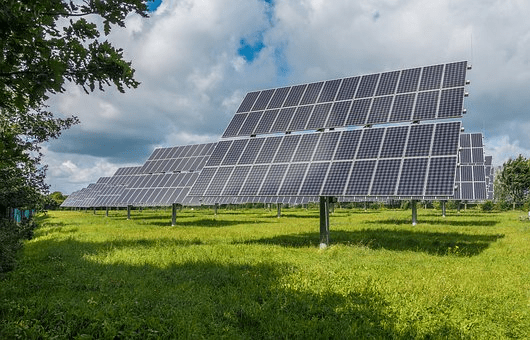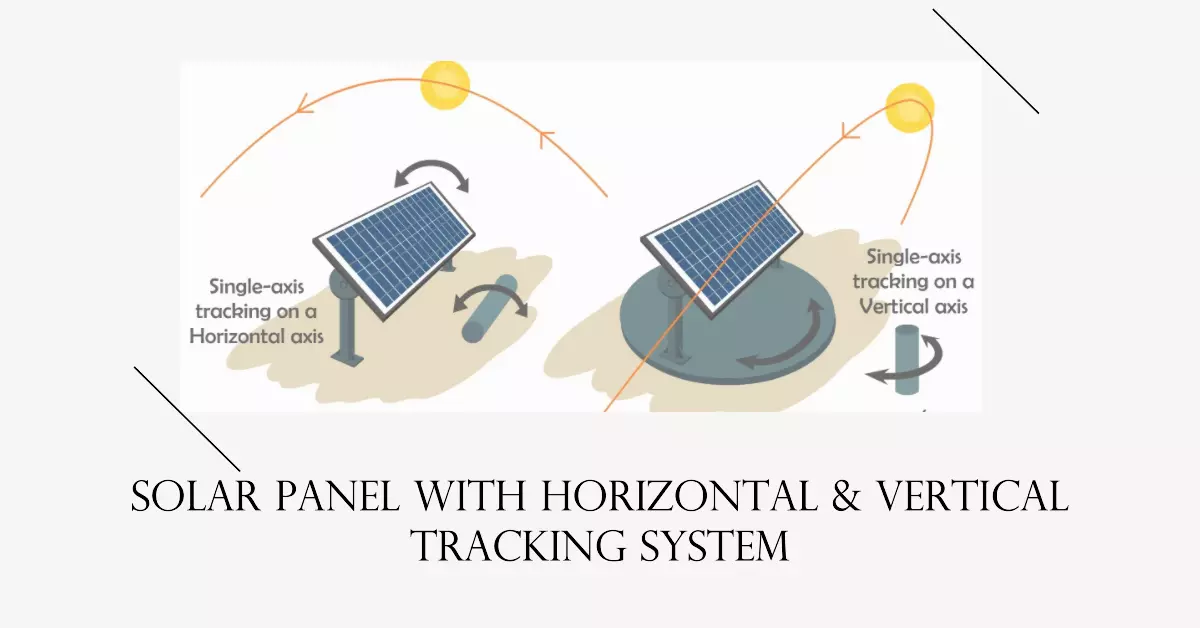Solar Tracker System
Solar panel manufacturers are always making small changes to their products to make them produce more energy per unit than older and rival models. Another proven way to boost system output is using solar tracker systems, which are different from fixed-tilt ground-mount systems because they let the solar panels follow the sun’s direction all day.
What is a Solar Tracking System?

Solar trackers or sun-following solar trackers are a type of device with photovoltaic (PV) panels that follow the Sun’s direction at all times of the day. They are also known as moving solar panels. These Sun tracking solar panels are used to make sure that solar panels and collectors are always facing the Sun as it moves across the sky every day.
When Solar tracker systems are used, they increase the amount of solar energy that the solar energy collector receives and the amount of energy that the heat or power that is produced. Solar Trackers have advantages that can boost the output of solar panels by 40 to 45 percent, which makes the project more profitable.
Types Of Solar Tracker
There are two main types of solar tracker systems available on the market: Single-axis solar trackers (1-axis solar tracker) and dual-axis (2-axis solar tracker) tracker
Single-axis solar trackers move with the sun from east to west by turning around a single point. They can move all at once, one row at a time, or section by section. Dual-axis trackers let panels directly follow the sun because they can move in both the X and Y directions.

Single-axis Trackers
Single-axis solar trackers collect less energy per unit than dual-axis trackers, but because their racks are shorter, they take up less room when installed. This makes the system footprint smaller and makes it easier to operate and maintain.
There are two types of single-axis trackers: controlled and decentralized. Trackers that are either centralized or spread use a single motor to power a driveline that moves a group of panels. Each tracking row in a decentralized system has its motor. Some trackers have motors on every set of racks. This makes it easier to change the rows during installation and sometimes lets each module move independently of the modules next to it.
Single-axis solar tracks were first made so that the rows of panels would move together like Venetian blinds during the day. Now, tracking software is being made to take into account how to make panel rows adjust for diffuse light, bad wind, and shading from rows and the horizon.
When there are clouds in the sky, sunlight doesn’t hit the Earth’s surface in direct beams. Instead, it comes in as diffuse light. This means that a panel looking directly at the sun might have a smaller generation. It could mean that the screens will be laid out flat to catch the light.
In the same way, tracks are set up to store panel rows horizontally when there is a lot of wind. Newer models can handle higher wind loads, and system-level monitors can sometimes figure out which rows of panels are not affected by wind events and let those rows keep tracking.
Historically, linked-row single-axis solar trackers have been more challenging to place on steep or undulating terrain, where grading might be needed. Some models, though, can now make up for uneven terrain. The technology has yet to be very common in colder places, but it’s starting to spread further into those areas.
![]()
Dual-axis Trackers
An arc of the Earth’s spin around the sun changes with the seasons. Because of this, a dual-axis tracker will always produce more energy than a single-axis tracking system because it can directly follow that path. Fixed-tilt solar systems don’t produce as much energy as dual-axis solar trackers, which make 30 to 45% more.
Dual-axis trackers are mostly used in homes and small businesses, but they are starting to be used on a utility scale. Each of these trackers is put in place on a single raised post so that the panels can be set up at a wider range of angles. Dual-axis trackers can hold up to 20 panels at once.
Since the screens are higher up, they are more challenging to clean. Dual-axis trackers, on the other hand, leave more room above them, so the ground below can be used for other things, like farming or even building carports.
Tracking solutions for rooftops are also starting to show up, though this is still an untapped field. These roof trackers work like dual-axis trackers because they rotate on a carousel-style track at the base of their racks. They can also change the angle of the panels to follow the sun more closely than single-axis trackers.
Sun Following Solar Trackers
Solar trackers monitor the sun’s position using various hardware, software, and physical principles. For active trackers, drivers are motors that are connected to sensors that respond to light from the sun or follow the device’s GPS locations. Separate, smaller PV panels power the driving system on some types of trackers.
Through sunlight, passive tracks turn using compressed gas and liquid that moves through the driver’s channels.
Drivers and controls on most solar tracks are covered for five years, and the racking is covered for ten years. Tracing system companies have made their systems work better over the last few years by adding monitoring software for preventative repair and finding the best angles for higher energy yield. Future developments in tracking technology will help technicians get the most power out of solar projects.
